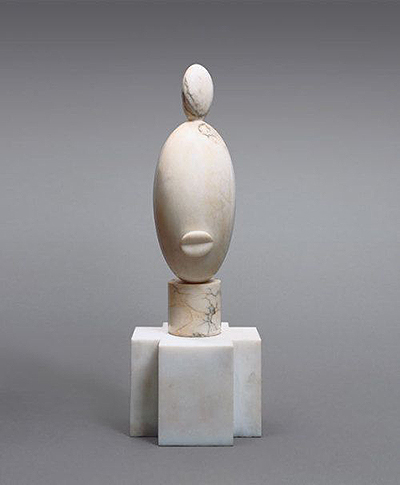Constantin Brancusi's story is truly one of rags to riches. The child of poor labourers, the young Constantin quickly showed an aptitude for wood carving, and ran away, aged just nine, from the poverty and back-breaking work of his Romanian home.
He fled to the nearest city, working in a grocer's store and then as a domestic servant where he learned a great deal and continued to work on his carving skills. Aged around 18, his skills were sufficiently advanced to earn him a patron who funded his entry into the Bucharest School of Fine Arts, from which he graduated with full honours. He worked in established sculptors' studios for a brief time, including that of the most imminent sculptor Auguste Rodin, but left knowing that his own talents would wither in the tremendous shade of Rodin's work. And in fact, this proved to be the case: freed from the constraints and expectations of others, Brancusi began to develop his own inimitable style, now working with stone to create, not exact replicas of things but rather attempting to enshrine their essence in stone: the spirit of the thing rather than its simulacra.
This work, The White Negress, could be thought of as being an ironic attempt at appropriation – and indeed would be, were it produced today, but should instead be considered as the product of its time and its creator: an expression of a rather naïve and perhaps endearing fascination with the exotic and foreign, understandable when Brancusi's poor and narrowly focused background is taken into account. And indeed, the sculpture has a pleasing whimsicality to it. A simple collection of shapes, the woman's full mouth the only truly recognisable anatomical feature, it is never-the-less instantly recognisable as the bust of an African woman: a long neck, perhaps braceleted, surmounted by a smooth oval head with the aforementioned beautifully rendered lips placed with exactitude, and the whole surmounted by a jaunty top-knot.
That these features are rendered with beautifully smooth shapes: a cylinder, an oval, even the top-knot is another simple shape, a smaller oval, and yet are bursting with attitude and sass – much of it bound up in the slightly exasperated pursing of the mouth, something that would be instantly recognisable to the child of any strong African woman. The sculpture is currently on display in the Philadelphia Museum of Art, and is carved from lightly veined white marble, designed to catch the eye and capture the heart.




